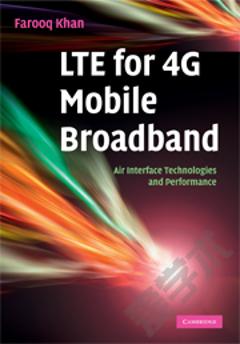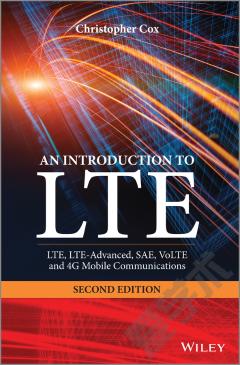Design, Deployment and Performance of 4G-LTE Networks —— A Practical Approach
----- 4G-LTE网络的设计、部署与性能——实用方法
This book provides an insight into the key practical aspects and best practice of 4G-LTE network design, performance, and deploymentDesign, Deployment and Performance of 4G-LTE Networksaddresses the key practical aspects and best practice of 4G networks design, performance, and deployment. In addition, the book focuses on the end-to-end aspects of the LTE network architecture and different deployment scenarios of commercial LTE networks. It describes the air interface of LTE focusing on the access stratum protocol layers: PDCP, RLC, MAC, and Physical Layer. The air interface described in this book covers the concepts of LTE frame structure, downlink and uplink scheduling, and detailed illustrations of the data flow across the protocol layers. It describes the details of the optimization process including performance measurements and troubleshooting mechanisms in addition to demonstrating common issues and case studies based on actual field results. The book provides detailed performance analysis of key features/enhancements such as C-DRX for Smartphones battery saving, CSFB solution to support voice calls with LTE, and MIMO techniques.The book presents analysis of LTE coverage and link budgets alongside a detailed comparative analysis with HSPA+. Practical link budget examples are provided for data and VoLTE scenarios. Furthermore, the reader is provided with a detailed explanation of capacity dimensioning of the LTE systems. The LTE capacity analysis in this book is presented in a comparative manner with reference to the HSPA+ network to benchmark the LTE network capacity. The book describes the voice options for LTE including VoIP protocol stack, IMS Single Radio Voice Call Continuity (SRVCC). In addition, key VoLTE features are presented: Semi-persistent scheduling (SPS), TTI bundling, Quality of Service (QoS), VoIP with C-DRX, Robust Header Compression (RoHC), and VoLTE Vocoders and De-Jitter buffer. The book describes several LTE and LTE-A advanced features in the evolution from Release 8 to 10 including SON, eICIC, CA, CoMP, HetNet, Enhanced MIMO, Relays, and LBS.This book can be used as a reference for best practices in LTE networks design and deployment, performance analysis, and evolution strategy.Conveys the theoretical background of 4G-LTE networksPresents key aspects and best practice of 4G-LTE networks design and deploymentIncludes a realistic roadmap for evolution of deployed 3G/4G networksAddresses the practical aspects for designing and deploying commercial LTE networks.Analyzes LTE coverage and link budgets, including a detailed comparative analysis with HSPA+.References the best practices in LTE networks design and deployment, performance analysis, and evolution strategyCovers infrastructure-sharing scenarios for CAPEX and OPEX saving.Provides key practical aspects for supporting voice services over LTE,Written for all 4G engineers/designers working in networks design for operators, network deployment engineers, R&D engineers, telecom consulting firms, measurement/performance tools firms, deployment subcontractors, senior undergraduate students and graduate students interested in understanding the practical aspects of 4G-LTE networks as part of their classes, research, or projects.
{{comment.content}}








 京公网安备 11010802027623号
京公网安备 11010802027623号